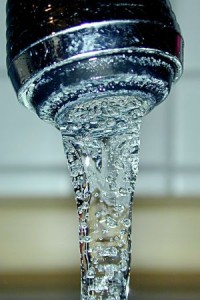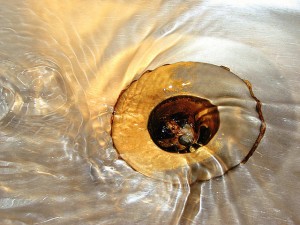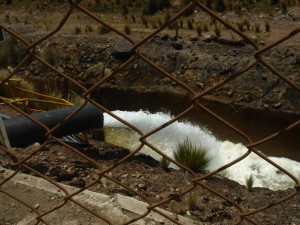Background
The Northern Ireland (NI) Freshwater Taskforce is comprised of the Royal Society for the Protection of Birds (RSPB/NI), the WWF/NI, Northern Ireland Environment Link (an umbrella organization), Ulster Angling Federation, National Trust, Wildlife and Wetlands Trust/NI (WWT), Ulster Wildlife Trust, Friends of the Earth, and The Rivers Trust. In 2012, they issued a report, From Source to Sea that sets out a 10-point action plan for sustaining water use in NI. The NI report follows on the publication of the Blueprint for Water in the United Kingdom (UK) by a coalition of environmental organizations that represent 9,000 staff, 6 million members, and 128,000 volunteers.
The NI report is short on specific details of how the actions set down in the 10 steps are to be achieved, and at what economic cost or benefit, but the report offers up a useful and clear reminder of what needs to be done and it points to recent developments that will help achieve the sustainable use of NI waters. With the oncoming risks to both the quantity and quality of our water from climate change, it is becoming more a prediction than a scare tactic that future wars will be fought over water not oil.
A number of the actions are self-explanatory and can be reviewed in the report. We will focus on some recent developments that make sustainable use of water resources imperative and several recent advances that make it achievable.
Quantity
Climate change is already making efforts to carefully use our water resources difficult, and the challenges will be greater with projected increased rainfall in winter and drier summers. The winter storms will lead to more and greater flooding and the NI report recommends that we develop, and pass legislation for, a flood risk management plan for NI. At the same time, flooding will continue to harm, indeed destroy, structures and infrastructures in low-lying areas that were built as a result of poor planning decisions and regulation. That problem requires attention in the new planning procedures to be implemented by local authorities.
The fact that NI will experience increased flooding does not mean it will benefit from a surplus of water resources because much of the floodwaters run off into water bodies without recharging groundwater supplies. In addition, summer dry spells will create pressure on allocating uses of water supplies. Users in NI continue to remove, or abstract, 619 million litres of water every day, or about 150 litres daily for each person. Of that water, 95% goes down the drain, and NI Water treats 134 million m3 of wastewater each year. Any increase in water usage will exacerbate fair and sustainable uses of water resources. Yet the NI government is pushing for increased production from agriculture, a major user, and is considering the permitting of natural gas exploitation, through fracking, a process that demands huge quantities of water. Something has to give.
The NI report sensibly calls for a cross-department coordination of water usage policies and practices and for an assessment of the level and cumulative impact of withdrawal from water resources. It also urges new planning policies that require new housing to be “water neutral.”
One important development for addressing runoff from roofs and roads is called Sustainable Drainage Systems, or SuDS, an unfortunate acronym. While it is promoted in the NI report, it is not explained or exemplified. Basically SuDS is an approach to managing rainwater or surface water drainage in urban areas where vegetation has been replaced by impermeable concrete or tarmac or roofs that cannot absorb rainwater. The excess rain flows into sewers and other hard structures often overloading them and causing flooding. With climate change more flood conditions are expected. In SuDS, the drainage of surface water is managed by using natural features, or structures that replicate natural systems. Examples include green roofs and permeable surfaces for streets, sidewalks, driveways and parking areas. Rainwater harvesting — capturing rainfall in barrels or larger collection systems and reusing it — is another means of preserving water resources. See, “Rainwater Harvesting” in the iePEDIA section of irish environment.
In other countries, such an approach to water drainage is called Best Management Practices or, in the US, Low Impact Development or, sometimes, Green Infrastructure.
Quality
Diffuse water pollution, or non-point source pollution, continues to create risks to water quality. The NI River Basin Management Plans indicate that only about 21% of protected areas that depend on water are in a favourable status, and 11% have not even been assessed.
The sources of the diffuse pollution are well-known: agriculture, roads, forestry practices, commercial activities. The solutions remain elusive as by their very nature diffuse sources are hard to detect and monitor. The NI report calls for greater monitoring and enforcement, for the polluters to pay for their pollution, and for the Nitrate Action Programme, especially the closed period for spreading manure, to be enforced. In particular for agriculture, the report urges a reform of the European Union Common Agricultural Policy (EU CAP) to reward farmers for producing valuable public goods, such as water quality and greater biodiversity.
Another source of threats to water quality are sewage systems, again a long-standing risk. The risk comes from both large wastewater treatment works, that need substantial funding for upgrades to prevent discharges to water bodies, and from small residential septic tanks, of which there are an estimated 120,000 in NI. The report indicates that at least 12,000 septic tanks do not have the necessary discharge consents. Funding the large treatment works, especially in these financially-constrained times, and finding the leaking septic tanks remain challenges.
Nigel Wylie
One way of assuring water quality and restoration of protected habitats is through Sustainable Catchment Management Programme (SCaMP). Again the SCaMP is supported in the NI report but without much in the way of description or detail. A catchment, also sometimes called a drainage basin, is an area of land where surface water from rain and melting snow or ice converges to a single point and empties into a river, lake, reservoir, estuary, wetland, sea, or ocean. The SCaMP focuses on managing catchment areas by improving farming practices and peat protection to enhance land conditions, wildlife habitats, and quality of the water before it empties into another water body.
Conclusion
Both the SuDS and SCaMP take a holistic approach to managing water drainage in urban areas and rural catchment areas. They focus on reducing or eliminating the problem of water quantity and quality at the source rather than at the end of a pipe, i.e., dealing with the water before it ever gets to a pipe that discharges into surface waters where treatment is often required.
The NI report stresses that water resources require not just government action, including funding of SuDS and SCaMP, but also participation by local communities that have special knowledge of water resources and solutions for adverse impacts to these resources. An example of community input can be found in the Rivers Involving People, Places and Leading by Example (RIPPLE), organized by WWF, and the Rivers Trusts. For more on the RIPPLE project, see the Interview with Geoff Nuttall, Head of WWF/NI, in the Podcast section of irish environment (November 2011).
Sources
Northern Ireland Environment Link, From Source to Sea: 10 Steps to Sustainable Water Use in Northern Ireland www.nienvironmentlink.org/publications/
Blueprint for Water, a publication of the Wildlife and Countryside Link in the UK. www.wcl.org.uk/blueprintforwater.asp
“Sustainable drainage systems,” www.defra.gov.uk/environment/quality/water/sewage/sustainable-drainage/
Susdrain: the community for sustainable drainage www.susdrain.org/
United States Environmental Protection Agency, “Low Impact Development (LID) and Other Green Design Strategies” cfpub.epa.gov/npdes/stormwater/menuofbmps/index.cfm?action=factsheet_results&view=specific&bmp=124





No comments yet, add your own below